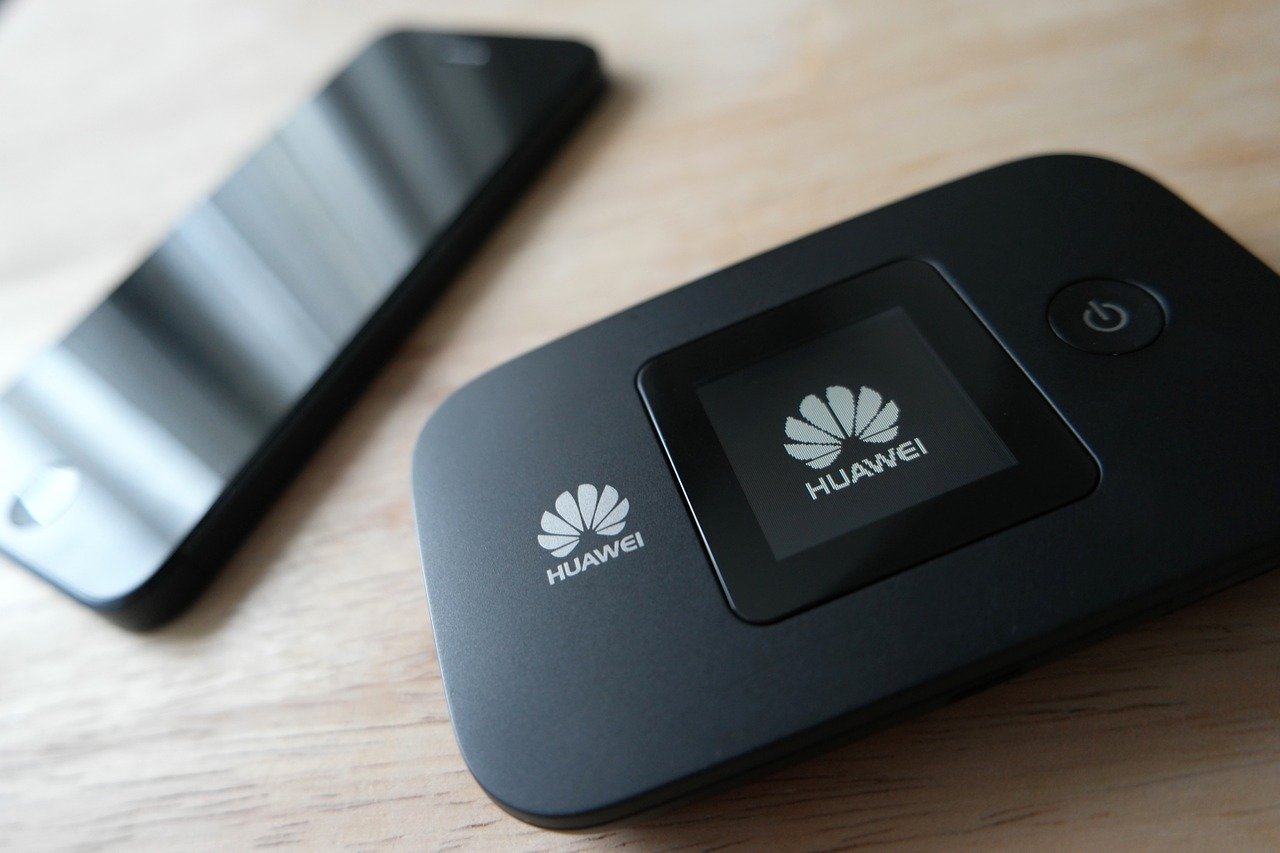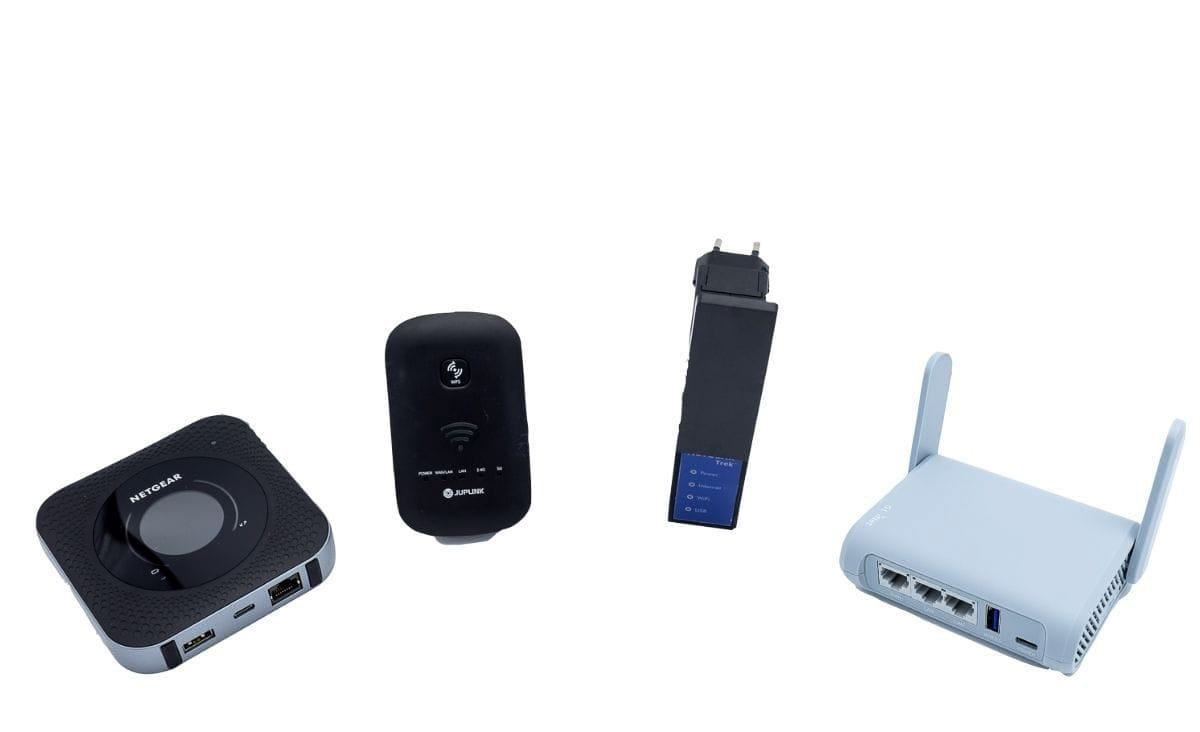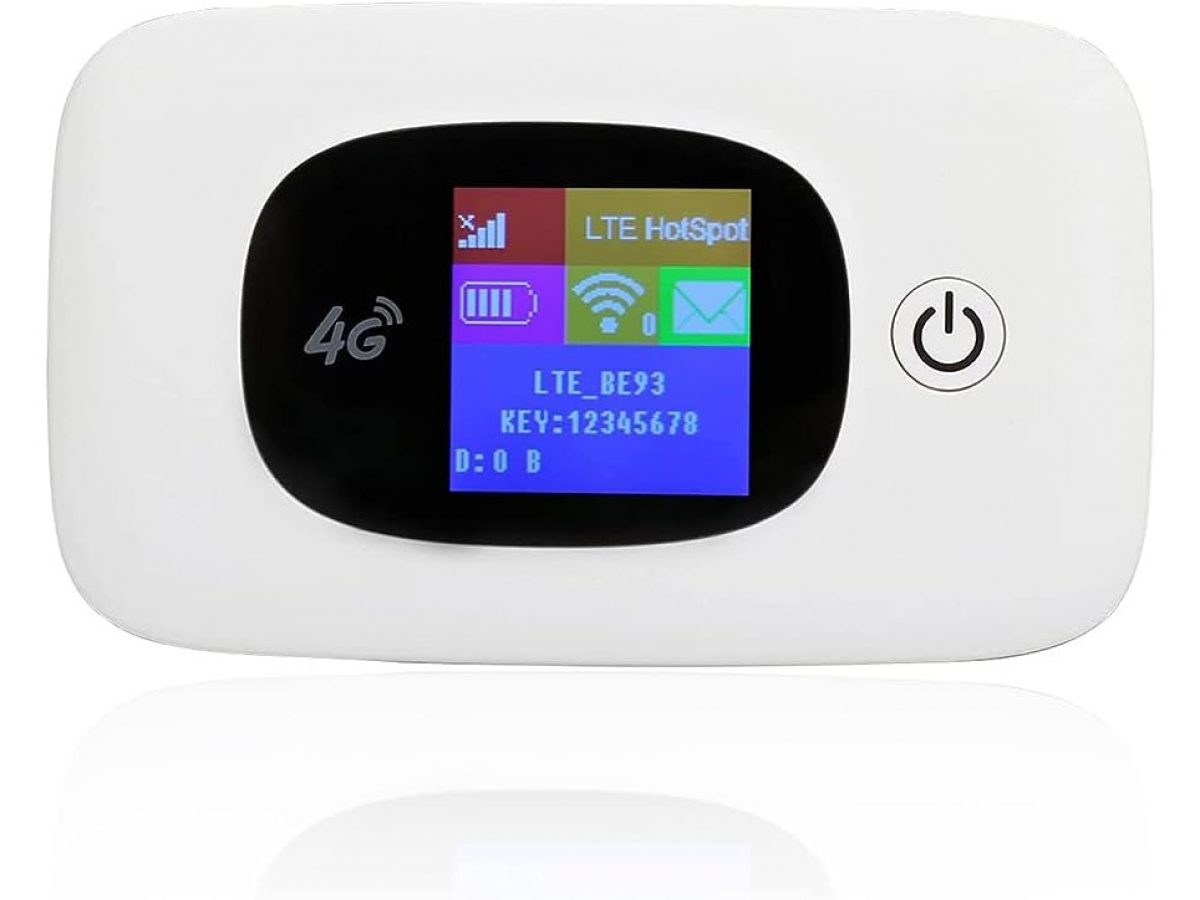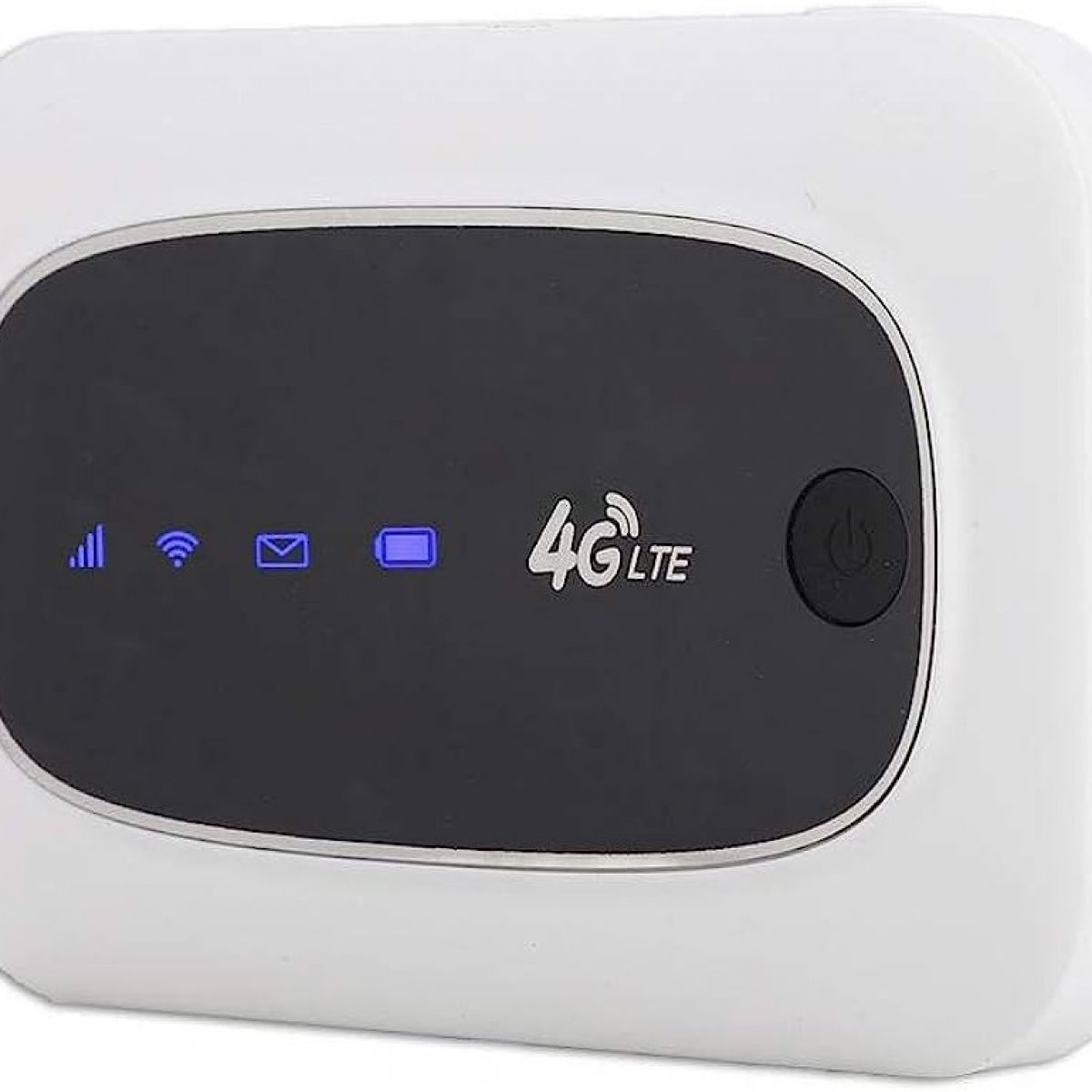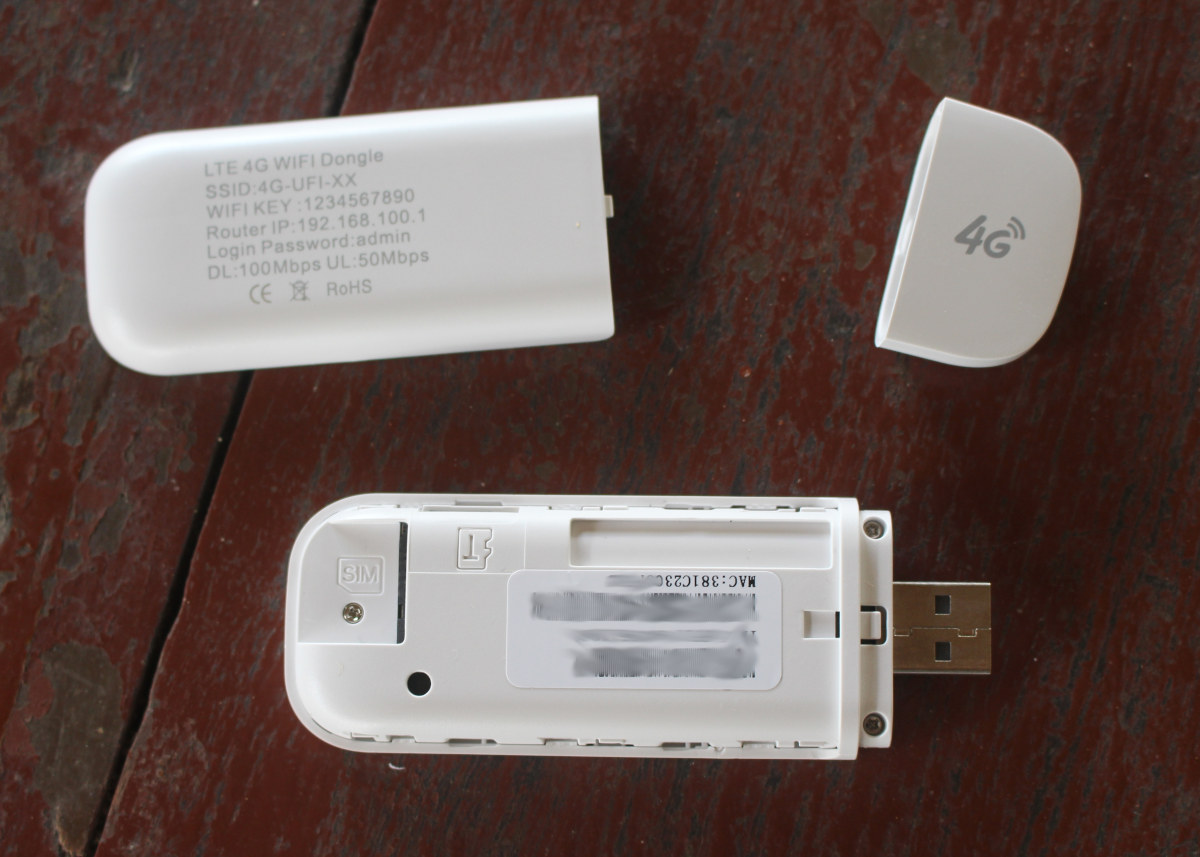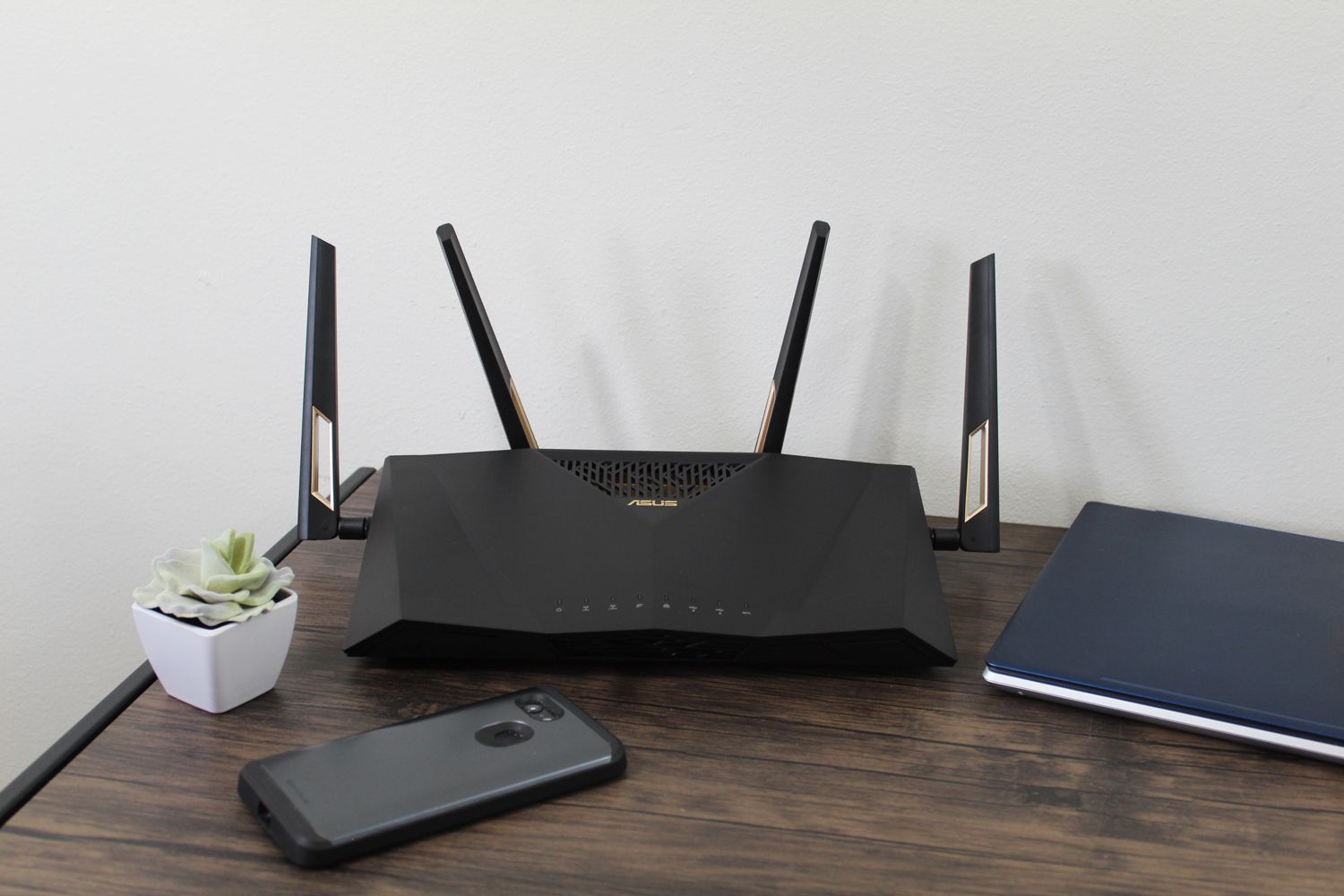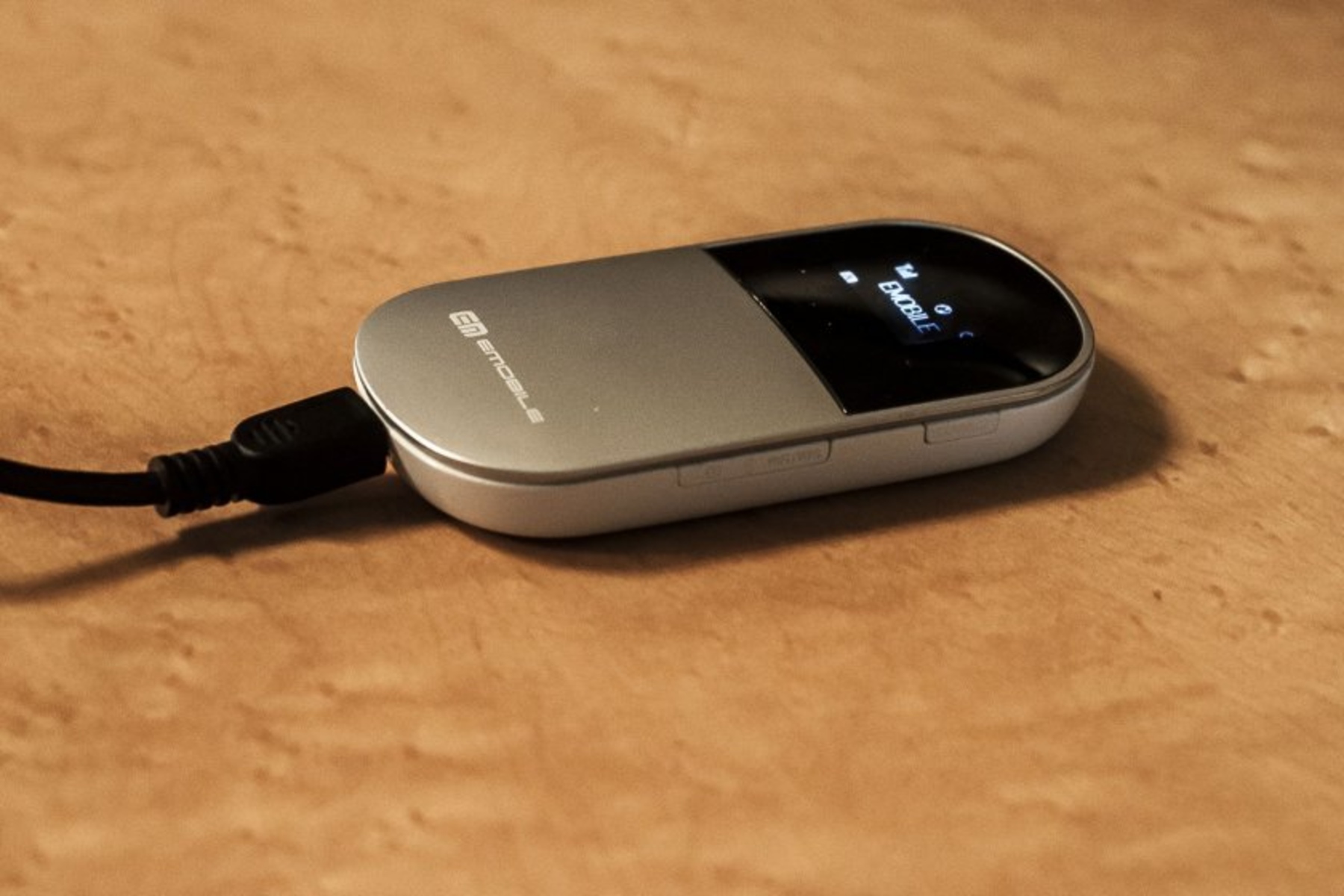Introduction
Welcome to this article, where we will explore the fascinating world of portable WiFi routers. In today’s fast-paced, connected world, staying online is essential, whether it’s for work, travel, or simply keeping in touch with loved ones. Portable WiFi routers have become a game changer, allowing us to access the internet on the go without relying on public WiFi networks or draining our mobile data plans.
A portable WiFi router, also known as a pocket WiFi or mobile hotspot, is a compact device that provides internet connectivity to multiple devices simultaneously. It acts as a bridge between a cellular network and our devices, allowing us to access the internet no matter where we are.
In this article, we will delve into how portable WiFi routers work and the key elements that make them such a convenient tool for staying connected. We will discuss the WiFi connection, SIM card compatibility, battery power, signal range, and provide tips for setting up and using these devices effectively.
So, whether you’re a frequent traveler, digital nomad, or simply someone who needs reliable internet access wherever they go, join us as we uncover the inner workings of portable WiFi routers.
What is a Portable WiFi Router?
A portable WiFi router is a compact device that allows users to create a personal WiFi network, providing internet connectivity to multiple devices simultaneously. It acts as a bridge between a cellular network and your devices, enabling you to access the internet on the go without relying on public WiFi networks or consuming your mobile data plan.
These small and lightweight devices have become increasingly popular among travelers, remote workers, and individuals who require a reliable internet connection outside of their homes or offices. With a portable WiFi router, you can easily set up a secure and private network wherever you are, ensuring seamless internet access for all your devices.
Most portable WiFi routers offer the convenience of being able to connect multiple devices at once, such as smartphones, laptops, tablets, and even smart home devices. This allows you to stay connected and productive, no matter where your adventures take you.
One of the significant advantages of a portable WiFi router is its ability to provide a secure connection. Unlike public WiFi networks, which can be vulnerable to hackers and data breaches, a personal WiFi network created by a portable router offers enhanced security and encryption.
Furthermore, portable WiFi routers are compatible with various cellular networks and service providers, allowing you to choose a plan that suits your needs and preferences. Whether you opt for a pay-as-you-go SIM card or a monthly data plan, you have the flexibility to customize your internet access based on your usage and budget.
Overall, a portable WiFi router serves as a convenient and reliable solution for staying connected on the go. With its compact size, versatility, and ease of use, it has become an essential gadget for those who value seamless internet access wherever they roam.
How Does a Portable WiFi Router Work?
A portable WiFi router works by connecting to a cellular network and creating a local WiFi network that enables devices in its range to connect to the internet. Let’s take a closer look at the essential components and functions that make a portable WiFi router function:
- WiFi Connection: The portable WiFi router connects to the internet via a wireless or wired connection. It can receive internet signals from sources such as a cellular network, Ethernet cable, or public WiFi network.
- SIM Card: To establish a connection to a cellular network, most portable WiFi routers require a SIM card, similar to the SIM card used in smartphones. The SIM card provides the router with access to the cellular network’s data services.
- Battery Power: Portable WiFi routers are equipped with a rechargeable battery that powers their operations. The battery allows the device to function wirelessly, providing internet access for an extended period, even when there is no external power source available.
- Signal Range: The range of a portable WiFi router refers to the distance over which it can transmit its WiFi signal. The signal range varies between different models, but generally, it can cover a range of a few meters up to several hundred meters, depending on the router’s specifications.
Once the portable WiFi router is powered on and connected to a cellular network, it will create a local WiFi network with its unique network name (SSID) and password. Users can connect their devices, such as smartphones, tablets, or laptops, to this network by entering the correct password.
When a device connects to the router’s WiFi network, it can access the internet through the cellular data connection provided by the SIM card. The portable router acts as a bridge between the connected devices and the internet, forwarding data packets between them.
The portable WiFi router also offers features such as encryption and password protection to secure the connection and prevent unauthorized access to the network. Some routers even allow for advanced settings like parental controls, VPN support, and guest WiFi networks.
Overall, portable WiFi routers provide a seamless and convenient way to stay connected to the internet while on the move. With their ability to create a personal WiFi network and connect multiple devices, they have become an indispensable tool for travelers, remote workers, and anyone in need of reliable internet access away from home.
WiFi Connection
The WiFi connection is a crucial component of a portable WiFi router. It allows the router to connect to the internet and provide wireless internet access to connected devices. Here’s how the WiFi connection works in a portable WiFi router:
1. Receiving the Internet Signal: The portable WiFi router receives the internet signal from a source such as a cellular network, Ethernet cable, or public WiFi network. This signal serves as the primary source of internet connectivity for the router.
2. Converting the Signal to WiFi: Once the router receives the internet signal, it converts it into a WiFi signal. This signal is then broadcasted as a local WiFi network, allowing devices within range to connect to it and access the internet.
3. WiFi Standards: Portable WiFi routers typically support various WiFi standards, such as 802.11n, 802.11ac, or the latest 802.11ax (Wi-Fi 6). These standards determine the speed, range, and overall performance of the WiFi connection.
4. WiFi Security: To ensure the security of the WiFi connection, portable WiFi routers employ various encryption protocols like WEP, WPA, or WPA2. These protocols encrypt the data transmitted between the connected devices and the router, protecting it from unauthorized access.
5. Wireless Channels: WiFi routers operate on different wireless channels to avoid interference from other nearby WiFi networks. They automatically select and utilize the least crowded channel to provide the best possible signal quality.
6. WiFi Range: The range of the WiFi signal depends on the router’s design and specifications. It can vary from a few meters to several hundred meters. Factors such as obstacles, interference, and the router’s power output also affect the signal range.
7. Multiple Device Connectivity: One of the significant advantages of a portable WiFi router is its ability to connect multiple devices simultaneously. Whether it’s smartphones, laptops, tablets, or smart home devices, all can join the router’s WiFi network and access the internet simultaneously.
Portable WiFi routers have simplified and enhanced our ability to stay connected on the go. By converting the internet signal into a WiFi signal, these routers provide a convenient and secure wireless network for our devices to access the internet smoothly. With their compatibility with various WiFi standards, robust security measures, and the ability to connect multiple devices, portable WiFi routers ensure reliable internet connectivity wherever you may be.
SIM Card
A SIM card plays a vital role in the functioning of a portable WiFi router. It is a small card that stores information and allows the router to connect to a cellular network. Here’s how the SIM card works in a portable WiFi router:
1. Cellular Network Connectivity: The SIM card provides the portable WiFi router with access to a cellular network. This enables the router to establish a connection to the internet using the data services provided by the cellular network.
2. Inserting the SIM Card: To use a portable WiFi router, you typically need to insert a SIM card into the router’s SIM card slot. The slot is usually located on the side or back of the router. The SIM card contains information such as the unique identifier of the cellular network (IMSI) and the subscriber’s account details.
3. Network Compatibility: Portable WiFi routers are compatible with various cellular networks and different types of SIM cards. Depending on the router model and specifications, it may support 2G, 3G, or 4G/LTE connectivity. Some advanced routers even support 5G networks, offering faster internet speeds.
4. Data Plans and Services: The SIM card used in a portable WiFi router is associated with a data plan provided by a cellular service provider. These data plans come in different packages, offering various data allowances, speeds, and validity periods. Users can choose a plan that best suits their needs and budget.
5. Swapping SIM Cards: One of the advantages of a portable WiFi router is its flexibility to switch between different SIM cards. This allows users to use local SIM cards while traveling abroad, taking advantage of local data plans and avoiding expensive international roaming charges.
6. Activating the SIM Card: When you insert a new SIM card into a portable WiFi router for the first time, it may require activation. Activation typically involves contacting the cellular service provider to register the SIM card and activate the data plan associated with it.
7. Managing Data Usage: Most portable WiFi routers offer features for managing data usage, including data usage monitoring, setting data limits, and notifications when nearing the data allowance. These features help users keep track of their data consumption and avoid unexpected charges.
The SIM card is an essential component of a portable WiFi router, enabling it to connect to a cellular network and provide internet access to connected devices. Whether it’s for local connectivity or international travel, the option to use different SIM cards gives users the flexibility to stay connected and enjoy reliable internet access wherever they go.
Battery Power
The battery power of a portable WiFi router is a crucial aspect that determines its usability and convenience. It provides the necessary energy to keep the router functioning, allowing users to stay connected to the internet even in situations where there is no external power source readily available. Here’s what you need to know about the battery power of a portable WiFi router:
1. Rechargeable Battery: Portable WiFi routers are equipped with rechargeable batteries that can be charged using a power adapter or a USB cable. The battery capacity varies depending on the router model, but it is typically measured in milliampere-hours (mAh). Higher battery capacity allows for extended usage without needing a recharge.
2. Battery Life: The battery life of a portable WiFi router depends on various factors, including the router’s power consumption, cellular network conditions, connected devices, and usage patterns. On average, the battery life can range from a few hours to a full day of usage before requiring a recharge.
3. Power Saving Features: Many portable WiFi routers come with power-saving features that help extend the battery life. These features automatically optimize the router’s power consumption by adjusting the WiFi signal strength, turning off idle connections, or entering sleep mode when not in use.
4. Charging Options: Portable WiFi routers can be recharged using different methods. Some routers come with a dedicated power adapter, while others can be charged through a USB port on a computer or a power bank. This versatility in charging options makes it convenient to recharge the router while on the go.
5. Battery Indicator: Most portable WiFi routers have a battery indicator, either in the form of LED lights or a digital display. This indicator shows the remaining battery life, allowing users to monitor the battery level and plan recharging accordingly.
6. External Power Source: In addition to the battery power, some portable WiFi routers have the capability to function as a power bank, allowing users to recharge other devices such as smartphones or tablets using the router’s battery power.
7. Using the Router While Charging: In situations where the router’s battery is running low, users can continue to use the portable WiFi router while it is being charged. This ensures uninterrupted internet connectivity without having to wait for the battery to recharge fully.
The battery power of a portable WiFi router is a critical aspect to consider when choosing a device. Longer battery life and efficient power management allow for extended periods of use without needing to recharge. Whether you’re traveling, working remotely, or attending outdoor events, a reliable and long-lasting battery is essential for uninterrupted internet connectivity on the go.
Signal Range
The signal range of a portable WiFi router refers to the distance over which it can transmit its WiFi signal. It is an essential factor to consider when choosing a portable WiFi router as it determines the coverage area and the ability to connect to devices within that range. Here’s what you need to know about the signal range of a portable WiFi router:
1. Router Specifications: The signal range of a portable WiFi router is influenced by its design, antenna configuration, and transmission power. Higher-end routers often have more powerful antennas and higher transmission power, resulting in a more extensive signal range.
2. Obstacles and Interference: The signal range can be affected by physical obstacles such as walls, furniture, and other structures. These obstructions can weaken or block the WiFi signal, reducing the effective range of the router. Additionally, interference from other electronic devices or neighboring WiFi networks can also impact the signal strength and range.
3. Indoor vs. Outdoor Range: The signal range of a portable WiFi router can differ between indoor and outdoor environments. In an open outdoor space, with minimal obstructions, the signal range can typically be more extensive compared to using the router indoors where walls and barriers may limit the signal range.
4. Signal Strength: The signal strength is another factor to consider alongside the signal range. Even if the router has a long signal range, a weak signal strength may result in slower internet speeds or intermittent connections at the fringes of the range.
5. Signal Boosting: In some cases, it may be possible to boost the signal range of a portable WiFi router using external antennas or signal amplifiers. This can help extend the coverage area and improve the signal strength in areas with weak connectivity.
6. Mesh Networks: Some portable WiFi routers are part of a mesh network system, where multiple routers are used to extend the signal range throughout a larger area. This setup ensures seamless connectivity and eliminates dead spots within the coverage area.
7. Optimizing Signal Range: To maximize the signal range of a portable WiFi router, it is recommended to place the router in a central location within the intended coverage area. It should be positioned away from physical obstructions and sources of interference for optimal signal propagation.
When choosing a portable WiFi router, considering the signal range is essential to ensure that it can cover the intended area and provide a reliable WiFi connection. Understanding the factors that influence the signal range allows users to make an informed decision and select a router that meets their connectivity needs.
Setting Up a Portable WiFi Router
Setting up a portable WiFi router is typically a straightforward process that can be done by following a few simple steps. Here is a general guide on how to set up a portable WiFi router:
1. Unbox and Power On: Start by unboxing the portable WiFi router and ensuring that all the necessary accessories are present. Plug in the router to a power source using the provided power adapter or USB cable, and turn it on.
2. Insert SIM Card: If your router requires a SIM card for cellular connectivity, locate the SIM card slot and insert the SIM card. Ensure that the SIM card is inserted correctly and securely into the slot.
3. Connect to the Router: On your device (such as a smartphone, tablet, or laptop), navigate to the list of available WiFi networks. Look for the WiFi network name (SSID) displayed on the router or packaging. Select the WiFi network and enter the corresponding password.
4. Configure Router Settings: Once connected, open a web browser and type in the router’s default IP address (e.g., 192.168.0.1) to access the router’s web-based interface. Follow the instructions provided in the router’s user manual to configure additional settings, such as changing the network name (SSID) and password, enabling security features, and adjusting advanced settings if desired.
5. Test the Connection: After configuring the router settings, perform a quick connectivity test by accessing a website or using a web-based application on your connected device. Ensure that you can browse the internet and that the connection is stable.
6. Connect Additional Devices: If you plan to connect multiple devices to the router, repeat step 3 for each device. Make sure to enter the correct WiFi network password to establish a secure connection.
7. Power Off and Store: When you’re finished using the portable WiFi router, it is good practice to power it off and store it in a safe place. This helps conserve battery life and protects the router from damage during storage.
Keep in mind that the setup process may vary slightly depending on the specific model and manufacturer of the portable WiFi router. Consult the user manual provided with your router for detailed instructions tailored to your device.
By following these steps, you can quickly set up and configure your portable WiFi router, allowing you to enjoy reliable internet connectivity wherever you go.
Tips for Using a Portable WiFi Router
Using a portable WiFi router effectively can enhance your internet connectivity experience and ensure a seamless connection wherever you go. Here are some tips to optimize your usage:
1. Choose the Right Data Plan: Select a data plan that suits your usage needs. Consider factors such as data allowance, validity period, and coverage to avoid unexpected charges or running out of data during crucial times.
2. Position the Router Appropriately: Place the portable WiFi router in a central location within the coverage area to achieve the best signal range. Keep it away from obstructions and sources of interference to optimize the WiFi signal strength.
3. Enable Network Security: Set a strong password for your WiFi network to protect against unauthorized access. Utilize encryption protocols like WPA2 to ensure secure connections between the router and connected devices.
4. Regularly Update Firmware: Check for and install any firmware updates released by the router manufacturer. These updates often include performance improvements, bug fixes, and security patches to enhance your router’s functionality.
5. Monitor Data Usage: Keep track of your data usage to avoid exceeding your plan’s limits. Most portable WiFi routers provide data usage monitoring features, allowing you to visualize and manage your usage effectively.
6. Use Power-Saving Settings: Enable power-saving features on your router to conserve battery life. Adjust settings such as sleep mode, idle connection duration, and WiFi signal strength to optimize power consumption.
7. Disconnect Unused Devices: When not in use, disconnect devices from the WiFi network to reduce network congestion and maximize bandwidth for connected devices.
8. Protect the Router: Safeguard your portable WiFi router from physical damage and theft. Store it in a secure place when not in use and avoid exposing it to extreme temperatures or moisture.
9. Consider External Antennas: If you require an extended signal range or have connectivity issues, consider using external antennas or signal boosters compatible with your portable WiFi router to enhance signal strength and coverage.
10. Disconnect if Unnecessary: When not actively using the internet, disconnect from the WiFi network to save battery life and reduce data usage. Reconnect when needed to conserve resources.
By incorporating these tips into your usage habits, you can optimize your portable WiFi router’s performance, extend battery life, and enjoy uninterrupted internet connectivity on the go.
Conclusion
Portable WiFi routers have revolutionized the way we stay connected to the internet while on the move. These compact devices offer the convenience and flexibility of creating a personal WiFi network, allowing us to access the internet on multiple devices simultaneously, regardless of our location.
In this article, we explored the concept of portable WiFi routers and how they work. We learned that these routers connect to a cellular network, convert the signal into a WiFi signal, and create a local network that enables devices to access the internet. The use of SIM cards enables compatibility with various cellular networks, giving us the freedom to choose the best data plan for our needs.
We also discussed essential aspects of portable WiFi routers, including their signal range, battery power, and WiFi connectivity. Understanding these aspects helps us make informed decisions when choosing a router and optimizing its performance.
Setting up a portable WiFi router is generally a straightforward process, involving unboxing, powering on, connecting devices, and configuring the router settings. Following a few tips, such as choosing the right data plan, positioning the router correctly, and monitoring data usage, can enhance the overall experience.
In conclusion, portable WiFi routers have become an indispensable tool for those who require reliable internet access outside of their homes or offices. Whether you’re a frequent traveler, remote worker, or someone who simply needs connectivity on the go, a portable WiFi router provides the convenience, security, and flexibility to stay connected no matter where you are.







